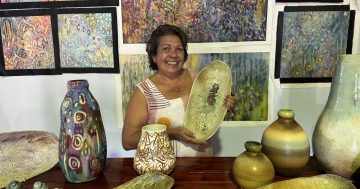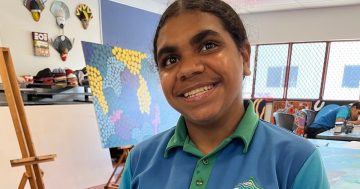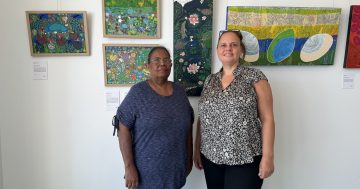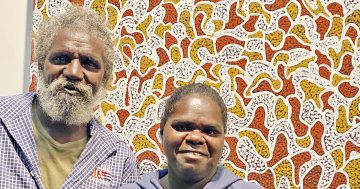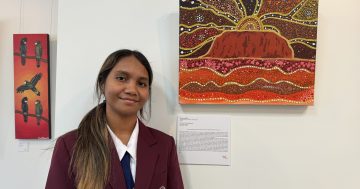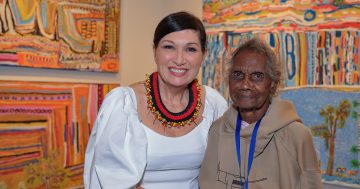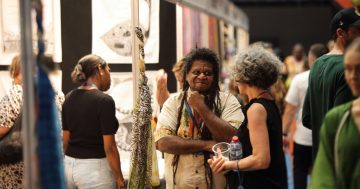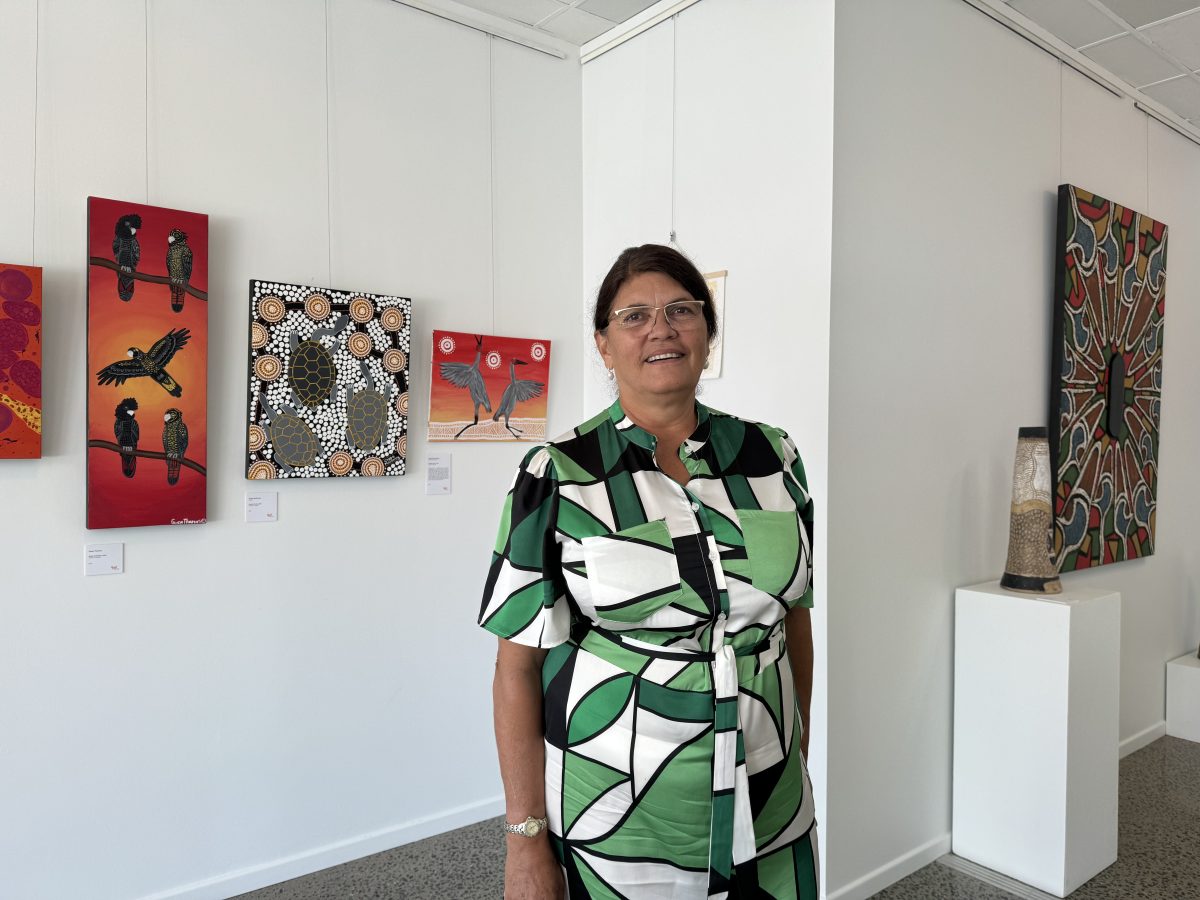
Artist Connie Rovina is determined to promote Queensland’s unique Indigenous art style after seeing many artists pushed out through plagiarism. Photo: Chisa Hasegawa.
Four years ago, KukuThaypan and Widi artist Connie Rovina was asked to pick up the paintbrush again after leaving the professional art world behind for almost two decades.
At a time when plagiarism of Indigenous art was rampant and being sold cheaply, many artists were pushed out of the industry that once fed their families.
The consequence was a huge setback in the representation of Queensland’s distinct First Nations art style, which Ms Rovina now fights to bring to the forefront.
“Going back to the eighties in particular, that’s when it was sort of really coming to the fore,” Ms Rovina said.
“Designs were being photographed and then, without the artists’ knowledge, were being reproduced, and there were no royalties or recognition coming back to those Indigenous artists.”
She said didgeridoos, for example, were being mass produced in places like Indonesia and brought back into Australia at a cheap rate.
“We had backpackers in Cairns who were painting them in sheds and then putting them on the market,” Ms Rovina said.
“At the time, you could get paid $300 to $400 for a didgeridoo that was really well decorated and was the real deal, but when those Indonesian pieces started being imported in that the backpackers were painting, people could get those for $20.
“We all tried to fight against it, but I know a lot of the Indigenous people here gave up, including me.
“In the end, I walked away for 19 years because it was just heartbreaking to see; it was so wrong.”
To this day, Ms Rovina said Indigenous art and designs were being plagiarised and printed onto various items like pillowcases, cushion covers and towels.
“The thing is, tourists just don’t know the difference; they come to Australia, see something that looks like Aboriginal art, and they think it’s the real deal,” she said.
“Even in places like Holland, I’ve heard that there are Aboriginal works being sold over there [that] have nothing to do with Aboriginal people.
“They’re just making money off of our designs.”

Unsuspecting buyers purchase fake Indigenous art not knowing the difference. Artist: Connie Rovina.
In a twist of fate, Ms Rovina became the owner of WidiWorks art gallery at Kuranda in 2020, ending her 19-year break from the industry.
“When they asked me to supply artwork, I thought ‘well, maybe I can kickstart this thing again’, and the next thing you know, that day I walked away with the shop,” she laughed.
“It was the start of me getting back on that bandwagon.”
After three months creating her works, the opening was a huge success.
“The first weekend that I was back after all of that time, I sold just about everything I had in my little shop,” she said.
“I haven’t looked back, [and] I think it helps that I can explain my artwork and talk about the style.”
Her main goal now is to promote Queensland’s unique style and break the myth that Aboriginal art is just one style.
“A lot of people see dot painting and cross hatching and things like that as nationwide designs for everyone to follow, but we don’t do that in Queensland,” Ms Rovina said.
“Due to the Stolen Generation, a lot of people became displaced and didn’t know what Country within Queensland they came from.
“So young people trying to get back into culture and trying to find themselves in the artwork, a lot of people start on those designs without knowing where it comes from.
“Once you start to get into it, you realise that the style isn’t actually from Far North Queensland, so that’s shaped the way that I do my artwork.”
Ms Rovina, who also works as the acting director at UMI Arts in Cairns, said it was great to see more opportunities and education for Queensland First Nations artists to shine.
“I think Queensland artwork would’ve been more full on today if we got the recognition we were needing back then, but I’m really happy to see we’re coming back,” she said.
“Indigenous artists from Cape York have the opportunity to engage in UMI Arts’ artists workshops and exhibitions that aim to develop skills and professionalism to promote themselves and also our specific Cape York Queensland type of artwork.
“I think young people especially are feeling more proud about the design, and are willing to stand up and explore art through social media as well.
“It’s much better to be able to paint about your own Country using your own style, and it gives you a sense of identity.”

Spiritual stories of animals found on Country is one of themes explored in Queensland’s distinct style. Artist: Connie Rovina.


